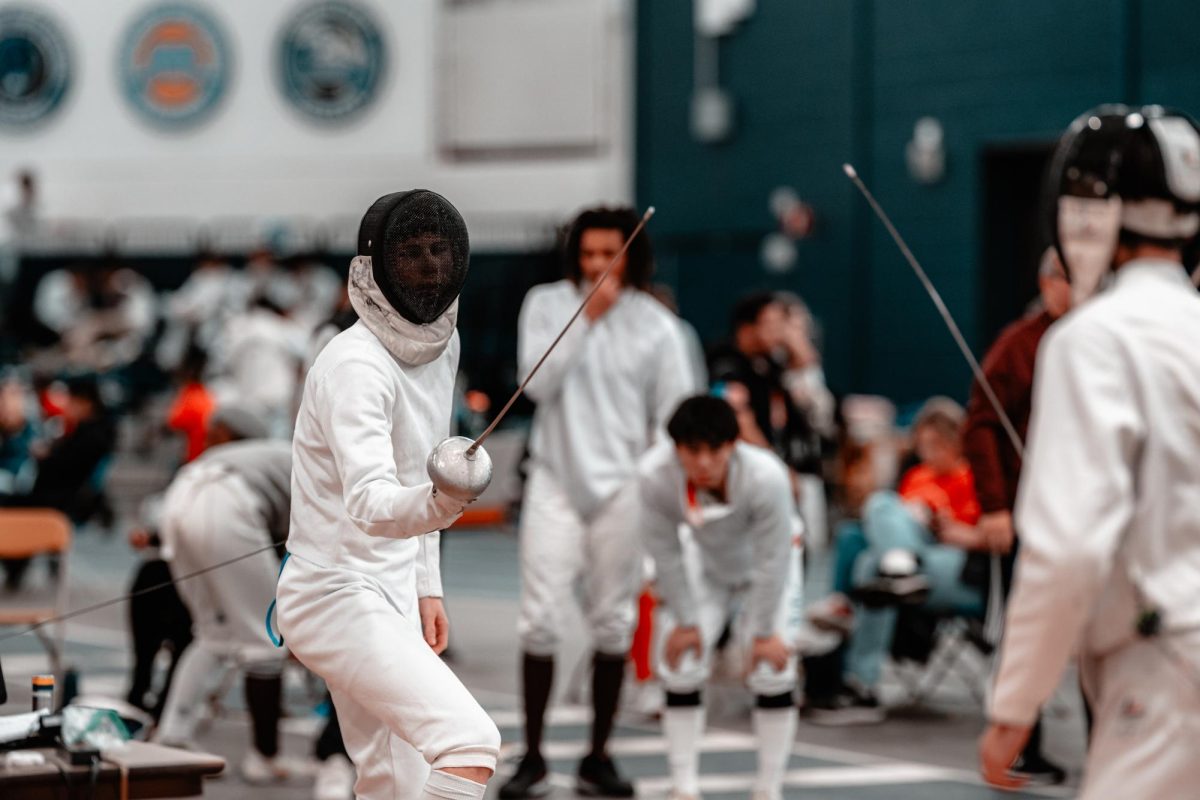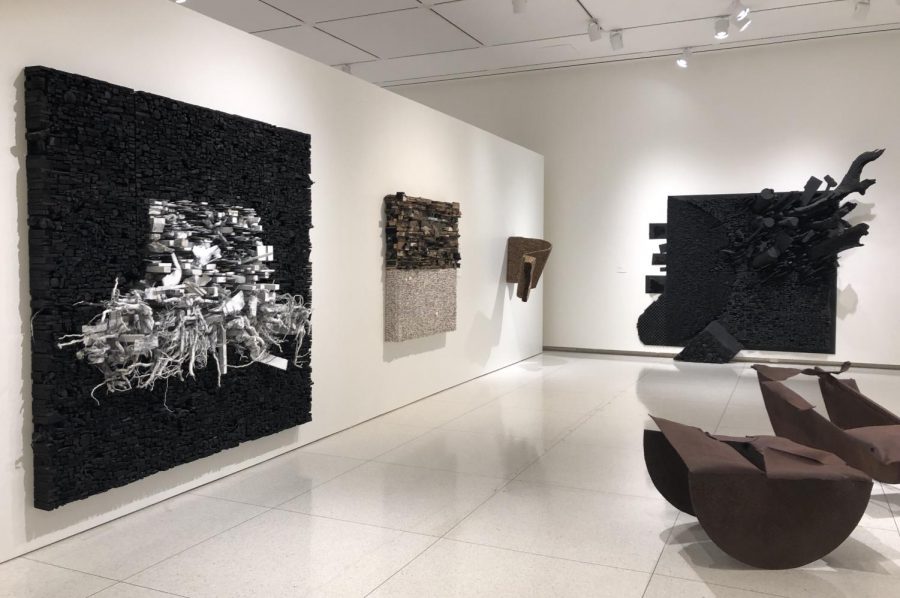Artist work pushes boundaries, transcends canvas
The joint installation showcasing works by Leonardo Drew and Melvin Edwards at the Smart Museum. The works are being presented as part of the “Solidary and Solitary” collection, which runs from January 29 to May 19.
April 17, 2019
When contemporary artist Leonardo Drew first saw the work of famed artist Jackson Pollock, he decided there was something else he could do with his own creative work.
“So I decided to challenge it: tie my hands and not do what was easy, which was drawing and painting,” Mr. Drew said. Now some of his artwork is part of the “Solidary and Solitary” exhibition at the Smart Museum, featuring African-American Artists from the 1940s to the present, on display through May 19.
Mr. Drew discussed the process that led him to finding his artistic style at a lecture held in Gordon Parks April 8. Mr. Drew takes materials such as feathers, wood and rope among others and transforms them into massive sculptures with techniques such as oxidation, burning and weathering.
His work is his life, and he considers himself an art addict.
“I get about four hours of sleep a day, pretty much ’round-the-clock work. If I’m not making it, I’m thinking about it,” Mr. Drew said about his process creating art. “It’s always this ongoing push to find out what’s on the other side.”
When he was younger, his work ethic was no different. At age 13, he had his first art exhibition featuring a life-size painting of Captain Marvel. Later, Marvel Comics, DC Comics and Heavy Metal magazine scouted him.
It wasn’t until he attended art school at The Cooper Union when he began experimenting with abstract art.
Some of Mr. Drew’s sculptures oscillate between being sculptures and paintings. Many of his sculptures use a canvas as a base but maintain enough three-dimensionality that they are considered sculptures.
“I started off as a painter, so that’s why the sculptures are coming off the wall like paintings,” Mr. Drew said, “because I think I’m still drawing off of my history as a painter.”
Mr. Drew believes the viewer should be able to find themself in his artwork.
“The work is like a mirror.” Mr. Drew said. “I don’t title the works. They are numbered for that reason. It’s not like I’m trying to steer you into thinking about it in a certain way.”
Much of his artwork draws from previous works, pulling in ideas and often actual parts of previous sculptures to create adaptations of previous works.
Mr. Drew said he constantly pushes his limits by exploring new mediums and materials.
“By tying my hands this is what happened,” Mr. Drew said, “and the end product is these monstrosities.”































































